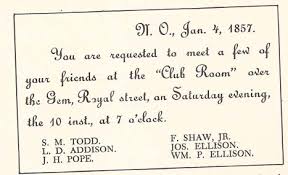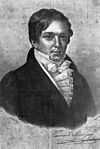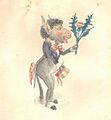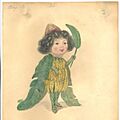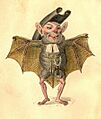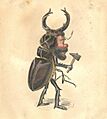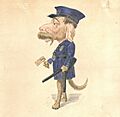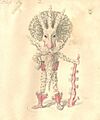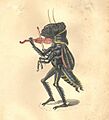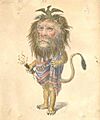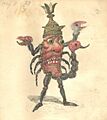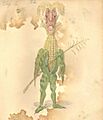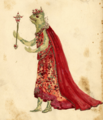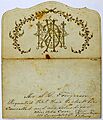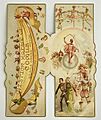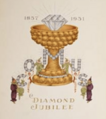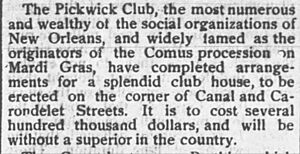Mistick Krewe of Comus facts for kids

Mistick Krewe of Comus 1898 Invitation
|
|
| Abbreviation | MKC |
|---|---|
| Named after | Comus |
| Formation | January 4, 1857 |
| Founded at | New Orleans, Louisiana, U.S. |
| Type | Carnival Krewe |
| Location |
|
The Mistick Krewe of Comus (MKC), started in 1856, is the oldest New Orleans, Louisiana Carnival group, called a Krewe. It was the longest to have parades almost every year from 1856 to 1991. Even today, the Krewe still holds a special ball for its members and guests. At first, the public knew them as The Pickwick Club.
Before Comus was formed, Carnival parties in New Orleans were mostly for the Catholic Creole community. Parades were not regular and often very casual. In 1833, Bernard de Marigny changed this with the first officially organized New Orleans Carnival parade and tableau ball.
It was Comus, in 1856, that truly made New Orleans Carnival what it is today. Six men from the Uptown area of New Orleans started the group. They helped make the celebrations more formal and regular. Later, in 1991, Comus stopped parading. This happened because the city passed a rule saying parade groups could not discriminate against anyone based on their race, religion, gender, disability, or sexual orientation. Comus, along with other old Krewes like Momus and Proteus, chose to stop parading instead of changing their membership rules.
Contents
How Comus Started
Building on the work of Bernard de Marigny, who organized the first official Mardi Gras parade in 1833, a new group formed. In December 1856, six men in New Orleans decided to create a secret society. Their goal was to celebrate Mardi Gras in a more organized way.
These men invited about 30 to 40 of their business friends to a meeting on January 4, 1857. They met above a restaurant in New Orleans' Vieux Carré. They named their group "Comus" after a character from John Milton's play Comus. They also got ideas for their parades from a group in Mobile, Alabama, called the Cowbellion de Rakin Society.
Some of the founding members included Samuel Manning Todd, a merchant, and Dr. John H. Pope, who is said to have named the group.
The new Comus group even got costumes, floats, and torches from the 1856 Cowbellion parade. Some historians believe that another Mobile group, Striker's Independent Society, also helped them.
One historian described the creation of Comus like this:
- It was Comus who, in 1857, brought new life to the old Carnival. Comus introduced torch-lit parades and themed floats to Mardi Gras. And Comus still ends the most loved celebrations of New Orleans with great style.
Comus's first night parade was a huge hit! It had torches, marching bands, and floats. It was so popular that for their second parade, thousands of visitors came to New Orleans just for the Carnival celebration.

Like other old Krewes, Comus had some connections to groups that supported unfair ideas about race in the past. For example, some parade themes, like "The Missing Links to Darwin's Origin of Species" in 1873, showed outdated and harmful views. These themes reflected the social attitudes of that time, which are not accepted today.
The Comus Parade
The Mistick Krewe held a parade every year on the evening of Shrove Tuesday from 1857 to 1991. They only stopped during wars or other major events. For a few years, from 1885 to 1890, the Krewe of Proteus took over the final parade spot on Shrove Tuesday. But in 1890, Comus started parading again as the last parade of Mardi Gras.
Parade Themes
- 1992 No Parade Planned theme: Enchantments and Metamorphoses
- 1991 Entomological Empire
- 1981 Idolatry
- 1979 No parade - New Orleans Police Department strike
- 1975 Comus' Constellations
- 1974 Visions of Valhalla
- 1973 Adventures of Perseus
- 1972 Fabled Isles (last parade to roll through the French Quarter)
- 1971 Feasts and Festivals
- 1970 Cities of Destiny
- 1969 Famous Gardens of the World
- 1968 History of New Orleans
- 1966 Monsters and Metamorphoses
- 1965 The Lure and Lore of Gold
- 1964 Journeys
- 1963 Mark Twain
- 1962 Nature: The Master Artist
- 1959 Poetry of the American Scene
- 1957 Famous Gardens of the World
- 1956 Early Contemporaries
- 1952 Bible Stories We All Know
- 1949 Familiar Facts and Fantasies
- 1941 No Parade - World War II
- 1940 Picturesque Passages from the Poets
- 1931 Jewels of Byron
- 1930 The Legend of Faust
- 1929 Gleanings of the Past
- 1928 The Travels of Marco Polo
- 1927 Arabesques
- 1926 The Gardens of Cashmere
- 1925 The Realms of Phantasy
- 1924 The Mirthful Monarch Greets Ye Once Again
- 1923 No Parade
- 1922 No Parade
- 1921 No Parade
- 1920 No Parade
- 1919 No Parade
- 1918 No Parade - World War I
- 1917 Romantic Legends
- 1916 Glimpses of the Modern World
- 1915 Lore and Legends of Childhood
- 1914 Tales from Chaucer
- 1913 Time's Mysteries
- 1912 Cathay
- 1911 Familiar Quotations
- 1910 Mahomet
- 1909 Flights of Fancy
- 1908 Gods and Goddesses
- 1907 Tennyson
- 1906 The Masque of Comus
- 1905 The Lost Pleiad
- 1904 Izdubar
- 1903 A Leaf from the Mahabarata
- 1902 The Fairy Kingdom
- 1901 Sections from the Operas
- 1900 Stories of the Golden Age
- 1899 Josephus
- 1898 Scenes from Shakespeare
- 1897 Homer's Odyssey
- 1896 The Months and Seasons
- 1895 The Songs of Long Ago
- 1894 Once Upon a Time
- 1893 Salambo
- 1892 Nippon, the Land of the Rising Sun
- 1891 Demonology
- 1890 The Plangenesis of the Mistick Krewe
- 1889 No Parade
- 1888 No Parade
- 1887 No Parade
- 1886 No Parade
- 1885 No Parade
- 1884 Illustrated Ireland
- 1883 No Parade
- 1882 The Worships of the World
- 1881 The Myths of Northland
- 1880 The Aztec People
- 1879 No Parade
- 1878 Scenes from the Metamorphoses of Ovid
- 1877 The Aryan Race
- 1876 Four Thousand Years of Sacred History
- 1875 No Parade
- 1874 The Visit of Envoys from the Old World and New to the Court of Comus
- 1873 The Missing Links to Darwin's Origin of Species
- 1872 Dreams of Homer
- 1871 Spenser's Faerie Queen
- 1870 The History of Louisiana from 1539 to 1815
- 1869 The Fives Senses
- 1868 The Departure of Lalla Rookh from Dehli
- 1867 The Triumph of Epicurus
- 1866 The Past, Present, and Future
- 1865 No Parade - American Civil War
- 1864 No Parade - American Civil War
- 1863 No Parade - American Civil War
- 1862 No Parade - American Civil War
- 1861 The Four Ages of Life
- 1860 Statues of the Great Men of Our Country
- 1859 The English Holidays
- 1858 The Classic Pantheon
- 1857 The Demon Actors in Milton's Paradise Lost
Gallery
Costumes and Floats
Invitations
Parade
Programs
Tableau
Why Parades Were Sometimes Stopped
From the first Comus parade until a police strike in 1979, nothing stopped New Orleans' big Mardi Gras parties except wars. On March 1, 1862, Comus announced that Carnival celebrations would stop because of the war. The New Orleans Daily Picayune newspaper printed this message:
To Ye Mistick Krewe –
GREETINGS!
WHEREAS, War has cast its gloom over our happy homes and care usurped the place where joy is wont to
hold its sway. Now, therefore, do I deeply sympathizing with the general anxiety, deem it proper to
withhold your Annual Festival in this goodly Crescent City and by this proclamation do command no assemblage
of the
-MISTICK KREWE-
Given under my hand this, the 1st day of March A.D. 1862.
Comus
Comus made similar announcements in 1917 (for World War I), 1942 (for World War II), and 1951 (for the Korean War). Each time, the leader of Comus convinced the leaders of other Krewes to stop their parties during these international conflicts.
From 1885 to 1889, the Mistick Krewe chose not to parade. During this time, the Krewe of Proteus moved its parade to Carnival night. When Comus started parading again in 1890, Proteus did not want to move their parade. That year, the two parades almost crashed into each other on Canal Street. A Comus masker helped avoid the crash, and Comus finished its parade.
Why Comus Stopped Parading
In 1991, the New Orleans City Council passed a new rule. This rule said that social groups, including Mardi Gras Krewes, had to publicly state that they did not discriminate. This meant they could not refuse members based on their race, religion, gender, disability, or sexual orientation. This rule was needed to get parade permits and other public licenses.
The Comus organization, along with Momus and Proteus, decided to stop parading. They chose not to parade rather than change their rules to include everyone. (Proteus later started parading again in 2000). Later, two federal courts said that this rule was against the First Amendment right to free association. However, the Krewe of Comus never started parading again.
The Pickwick Club Connection
It is now known that The Pickwick Club was a public group that hid the secret activities of the Mistick Krewe. The two groups were connected, but only The Pickwick Club was known to the public. The early members of The Pickwick Club kept their connection to the Mistick Krewe a secret. Both groups became famous on their own. This was similar to how The Louisiana Club was connected to the Knights of Momus.
Today, the members of The Pickwick Club and the Mistick Krewe are not exactly the same. However, it is believed that some people belong to both groups.
Keeping Secrets and Being Exclusive
The Mistick Krewe has always kept its members' identities and its activities (other than the parade) very private. They are even more secret than other Carnival groups.
There's a story that getting into the Mistick Krewe's ball was so hard that a group of uninvited ladies tried to force their way in. In other years, people tried to beg, buy, or even steal invitations to the ball.
Even after the ball is over, invitations from the Mistick Krewe of Comus are very special to collectors. They are rare and often very beautiful.
The "Meeting of the Courts"
The Mistick Krewe of Comus also started another Mardi Gras tradition called the "Meeting of the Courts." This began in 1882. That year, Rex (the King of Carnival) and his Queen formally visited the throne of Comus. This special meeting became the way Mardi Gras season officially ends. This tradition continues even today.
Even though Rex is called the King, some people believe that the "Meeting of the Courts" shows Comus is more important. This is because Rex leaves his own party to be welcomed by Comus at the Mistick Krewe's masked ball.
Mardi Gras Parades Today
The first Comus parade was held on Mardi Gras in 1857, and it became a yearly event. Other groups in New Orleans started up, inspired by Comus, and they also became known as Krewes.
For over 100 years, Comus paraded on Mardi Gras night. It was the very last parade of the Carnival season. It was usually smaller and calmer than other parades that day, like those by Rex and the Zulu Social Aid & Pleasure Club.
Comus parades were known for their unique themes. These themes often came from ancient history and old stories. While newer, larger Krewes like Endymion and Bacchus might have themes like "Foods of the World," Comus would choose themes like "Serpent Deities of the Ancient Near East."
See also
- Striker's Independent Society
- The Pickwick Club
- Knights of Momus
- Krewe
- Twelfth Night Revelers


